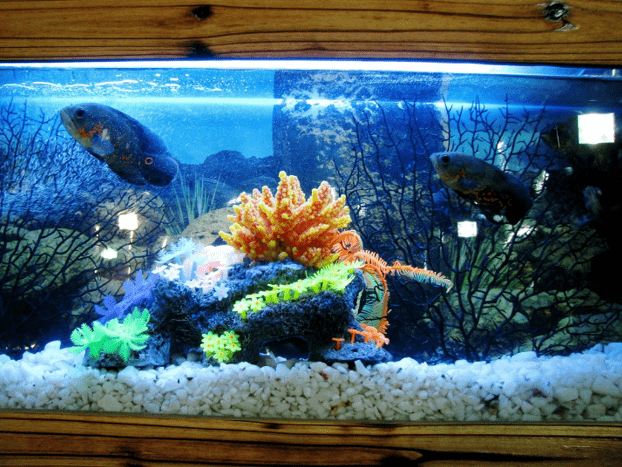
Having your very own aquarium at home is a rewarding hobby as fish are incredibly lively creatures. However, it is not a passion without obstacles as the environment inside the tank is often prone to the development of various parasites. One of the most dreaded ones is the infamous bryopsis algae.
What Is Bryopsis?
If you are an aquarium enthusiast and owner, then you probably already know what bryopsis looks like. Commonly referred to as hair algae, this parasite looks like green fuzz and it is generally found in fish tanks. Surprisingly enough, bryopsis is not just one species of algae.
In fact, the scientific moniker ‘Bryopsis’ refers to the genus of various species of algae from the family Bryopsidaceae. The most widespread varieties include Bryopsis africana, Bryopsis hypnoides, Bryopsis pennata, Bryopsis plumosa, Bryopsis Rhizophora, Bryopsis stenoptera, and Bryopsis vestita. Around 50 others have been discovered so far.
So, what is bryopsis? You can get a clear answer to this question from this well-researched article by our experts at Reef Nation. You’ll find there more info on the subspecies of bryopsis, how it usually gets in your tank, and how it can be successfully removed.
According to the University of Hawaii, bryopsis algae grow in delicate fronds. When located in their natural habitat in warm water, they drift with the current. They are indigenous to the island, the Australian shoreline, the Indian, Atlantic and Pacific Oceans, the Mediterranean Sea, and the Caribbean.
Bryopsis attaches to any hard surfaces, such as rocks, gravel, rubble, or basalt. For this reason, they are commonly found in aquariums with nutrient-rich water. They are invasive, and even toxic when they become too numerous. Since they reproduce really fast, this happens more often than not if you’re not paying attention.
A 2005 study called “Behavior of Nuclei during Zoosporogenesis in Bryopsis Plumosa” has shown that they divide at an alarming rate once the process starts. They divide so fast that they can take over your tank in a matter of days. So, a small patch of green fuzz in your tank should be reason enough for immediate action. Fortunately, there are ways to get rid of the parasite.
How to Remove It
Getting rid of bryopsis from a fish tank is complicated as most substances that promise to do that are ineffective. However, there are simpler alternatives you can try out. The classic approach is to remove any fronds manually and start controlling tank nutrients so that the parasite doesn’t have something to feed on.
If the problem has already become widespread, then you can use a 3% hydrogen peroxide solution. Remove the affected items from the tank and rub the formula on them. Let it act for a few minutes and place them back in. You will notice an improvement in as little as 72 hours.
However, hydrogen peroxide can be toxic for fish and corals even in small concentrations. Therefore, the application should be done outside the tank. Fortunately, a better alternative exists. It is an antifungal medicine called fluconazole.
If you’ve had a fungal infection yourself, then you are familiar with the one-time dose of fluconazole to get rid of the spores in the body. The drug is used for the treatment of ill fish, which makes it perfectly safe for any aquatic lifeforms.
In the case of bryopsis eradication, a one-time dose is recommended as well. Depending on the size of your tank and what species of fish are swimming around in there, amounts may vary. The contents of 15 to 20 capsules on average are enough to treat the problem without becoming harmful.
Pour the capsules’ contents in the tank, then stir gently. Don’t be alarmed if the medicine doesn’t fully dissolve right away. Allow the fluconazole 10 days to act, and you will notice the bryopsis slowly withering and dying out. After two weeks, your tank should be parasite-free, as the medicine takes care of most green hair algae (GHA) as well.
Conclusion
The term ‘bryopsis’ refers to multiple species of algae that share similar characteristics and are widely encountered as parasites in aquariums. If you notice their delicate green fronds in your fish tank, you need to take immediate action. With the proper treatment, eradication is entirely doable.





